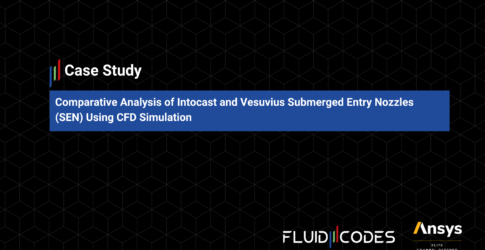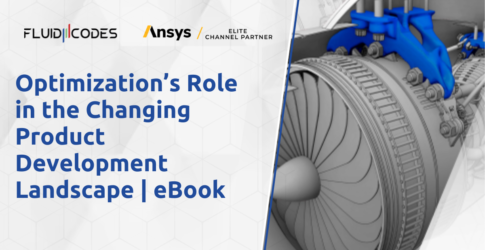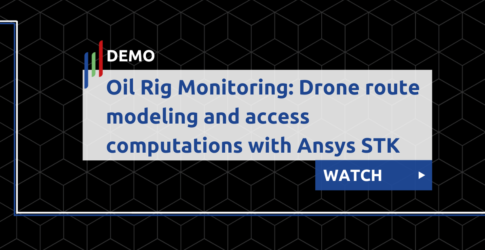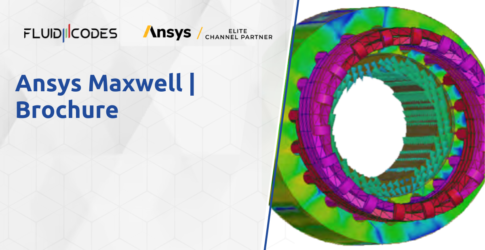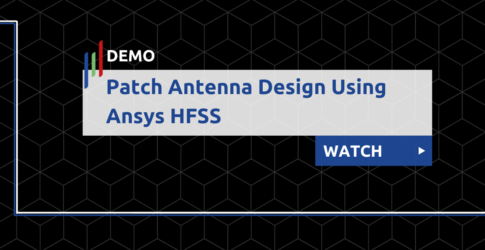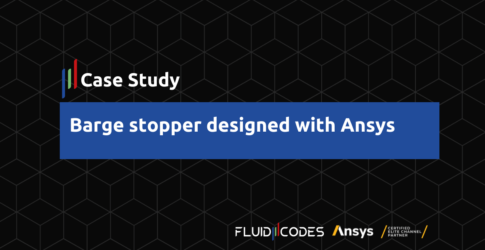Engineering Simulation for the Build Environment
For thousands of years, the construction industry has responded to the issues of its day with innovation after innovation. Today’s challenges are centered around saving energy, minimizing operating costs, and improving safety and occupant comfort. To address so many different challenges computer modeling is a must-do.
To stay ahead of the competition, the most innovative companies in the construction industry use virtual simulation to understand the impact of their design decisions, ranging from site selection to architectural details to materials to heating and cooling.
Ansys engineering simulation software offers designers, engineers and construction companies the most automated, efficient and cost-effective simulation methods available in the 21st century.
Structural Building Design
The structural integrity and stability of any building is only as good as its individual parts. The way those parts fit together, along with the choice of materials and the building site, all contribute to how the building will perform under normal — or extreme — conditions. Civil engineers integrate this knowledge into their building designs and comply with increasingly demanding safety and government regulations. At the same time, the general public is demanding environmentally conscious designs.
Ansys simulation software gives designers the ability to assess the influence of these variables in a virtual environment.
Through visualizing the effect of a wide range of variables, engineers can narrow the scope of field investigations, save considerable time and cost on projects, and move more quickly to the groundbreaking stage.
Civil engineers use Ansys for projects as diverse as high-rise buildings, bridges, dams, stadiums, etc. By experimenting with innovative design in a virtual environment, dams, stadiums, etc. By experimenting with innovative design in a virtual environment, engineers and designers can analyze safety, strength, comfort and environmental considerations.
Wind Engineering
Designs of skyscrapers, bridges, stadiums and iconic landmarks around the world grow more complex with each new project. As a result, construction engineers must carry out more complex wind engineering analyses to simulate how a building responds to its environment, or the effect that the structure will have on the space around it.
Understanding the aerodynamics of a building is much more efficient and accurate when virtual modeling is used. Assessing the structural load imposed by the wind is a priority. But simulation provides much more information, including the transport and dispersion of pollutants, or pedestrian comfort at ground level.
ANSYS tools offer engineers a greater understanding of the aerodynamics of structures while providing regulatory authorities with vital environmental impact information, particularly if the building falls outside standard design codes.
Because such analysis evaluates various options quickly and efficiently, simulation reduces the risk of faulty construction and increases the probability of project completion on time and within budget, satisfying all regulatory requirements.
HVAC Equipment Design
Heating, ventilation and air conditioning (HVAC) is an extremely competitive industry, and the main pressure is to design more effective equipment at a faster rate. Improvements that address noise reduction, energy efficiency, eco-friendly design and reliability are pivotal for HVAC manufacturers trying to get ahead of the competition by using simulation.
Simulation Driven Product Development using Ansys software allows designers to analyze the performance of their equipment in a variety of scenarios, without having to build physical prototypes during the preliminary design stages.
Ansys technology incorporates extensive capabilities across multiple disciplines, so engineers can apply mechanical, fluids and multiphysics tools to a wide range of HVAC equipment design, including:
- Air cleaning equipment
- Air conditioners
- Air handlers
- Burner design/boilers
- Chillers
- Diffusers
- Heat exchangers/coils
- Humidifiers/dehumidifiers
- Heating equipment
- Pumps/blowers, fans and compressors/exhausters
- Refrigeration
Designing HVAC components requires complex computer-aided design (CAD) assemblies. Software from Ansys allows tight CAD connections for accessing geometry and material parameters. The simulation software enables engineers and designers to import full 3-D CAD models into the Ansys Workbench environment, where they can view and analyze 3-D product designs. Productivity tools such as automatic contact detection offer an easy way to set up testing, giving designers more time to focus on design decisions.
Staying ahead of the competition requires innovation and efficient product development. Virtual simulation capabilities from Ansys offer faster, more cost-efficient design. Simulation-driven product development can speed the time to market and save tremendously on production costs.
Blast, Explosion And Impact
It’s impossible to predict many of the hazardous events that can occur in buildings: blast, explosion, impact of flying debris, gas leaks, terrorist attacks, to name a few. And because accidents can’t always be prevented, building designers, city officials and administrators need to take the possibility of these events into account when they are designing and building a new structure. Designing a building by modeling the consequences of these threats can improve the structural integrity of the building, and it can also create a safer and more comfortable environment for their occupants.
In many disaster scenarios, destruction is so severe that reconstructing the event is difficult. But the knowledge gained from piecing together what happened can benefit designers and engineers. Ansys software allows engineers to virtually model various structures and test the impact of environmental and destructive forces as many times as needed to completely understand the effects of a disaster on a structure.
Through virtual modeling, designers can learn not only what happens to a structure when disaster strikes, but why. Consider this example: A portion of a building collapses when hit by a vehicle. Multiphysics insight into the development of the disaster can provide guidance on how structures can be improved to keep survivors safe — such as modifying ventilation and fire suppressions systems — and strengthened to survive future events. The unequalled depth and unparalleled breadth of simulation software from ANSYS offers engineers many opportunities to optimize building designs to protect them from known yet difficult-to-predict dangers.
Fire & Smoke Propagation
Engineers and architects simulate fire and smoke propagation to design management systems for buildings, subways, and other facilities must be mindful of three key factors: the safety of the occupants, structural integrity of the facility and adherence to government regulations.
The key to managing fire and smoke starts with understanding the multiphysics phenomena that underlie how fires start, develop and affect a structure. Virtual testing is the most cost-effective and accurate means of determining these factors. It is also the best way to develop systems to prevent and manage the fire.
Ansys simulations of smoke and fire propagation offer detailed, reliable representations of real-life scenarios to aid in planning for emergency evacuation and optimal placement of firefighting equipment.
Simulation allows engineers to analyze the effects of fire and extreme temperature on materials — in addition to structural deterioration analysis — during catastrophic events such as explosions. This enables the rapid implementation of smoke-management strategies and efficient investigation of fire and smoke management after catastrophic events.






